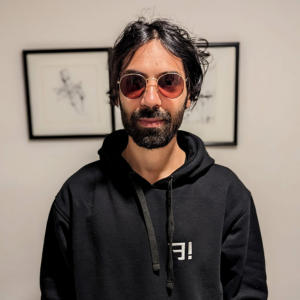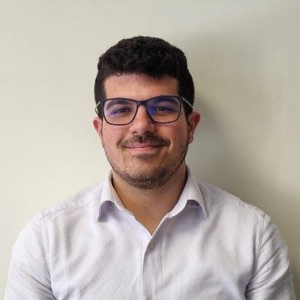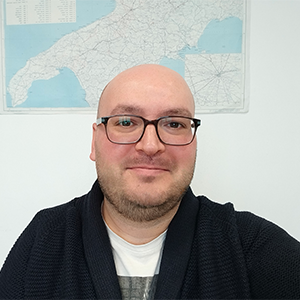
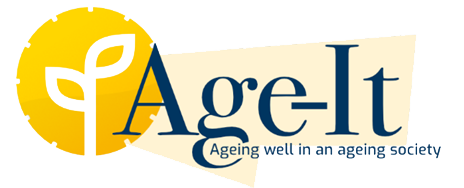
Age-It is a research programme that aims at generating a quantum leap, making Italy the leading scientific hub in research on ageing, and a state-of-the-art “empirical laboratory” regarding the ageing process. Age-It will set the gold standard in terms of socioeconomic, biomedical, policy, and technological solutions for an inclusive ageing society. Italy will become a benchmark for other, also non-European, rapidly ageing societies.
Age-It Information
Population ageing is a major, and unprecedented, 21st century phenomenon. As a trend, it concerns the whole world, both in terms of increasing chances for individuals to reach old age (even if not necessarily in good health), and of a rising share of older people over the total population. Global ageing is driven by the reductions in fertility and improvements in survival, typically occurring through the demographic transition. International migration partly mitigates, in some countries, the speed of changes in the age structure. Hence, the demographic transition has triggered several dynamic processes involving society, markets, welfare states, cultural and political change, within a global interconnected system. These concurrent megatrends have caused dramatic changes in the landscape of our societies, positioning high-income countries into unchartered territory. Ageing is a multi-faceted complex process, presenting challenges and risks, but also offering ground-breaking opportunities to promote inclusive well-being for the society as a whole.
The Age-It programme follows the view of the World Health Organization, which promoted the adoption of policies and strategies based on the “active and healthy ageing” framework concept (WHO 2015). Accordingly, ageing is not considered as a time of mere decline in mental and physical functioning, leading to a condition of health and socioeconomic dependency that makes older people a “social problem”. Older age should be rather seen as a period of life in which individuals can use their maturity to represent a precious resource for society, and an opportunity for building economically prosperous, socially just, and environmentally sustainable societies.
Italy is leading global ageing: 23.3% of the population is 65 or older, and 7.5% is 80 or older (United Nations Population Division 2020); life expectancy in 2015-20 is among the highest in the world, both at birth (83.3 years) and at the age of 65 (21.1 years), with current very low levels of fertility (1.24 children per women in 2020) and net migration likely to accelerate the ageing process. This position as a frontrunner of ageing, together with the country’s extraordinary regional disparities (North vs. South, Coastal vs. Inland, Rural vs. Urban), make Italy the ideal “empirical laboratory” to address how different combinations of biological, clinical, cultural and socioeconomic factors, in addition to a variety of institutional responses by health and social care systems to the ageing process, are leading to different individual and societal outcomes. Italy thus represents an exceptional context to design, test, and implement diverse innovative solutions, and to adopt different models of intervention for prevention, health and long- term care, working arrangements, political agendas and societal outreach.
Nonetheless, while Italian scholars and specific research groups have had important individual achievements in this field, Italy cannot be considered an international reference hub of research on ageing and the contributions to the realization of national active and healthy ageing policies have been so far limited. Structural bottlenecks have hampered the advancement of research in the world of ageing: the prevalence of discipline-specific analytical frameworks, the limited transdisciplinary collaboration, the scattered availability of data, and the difficulty in translating the various scientific studies into policies. These four limitations are clearly interrelated. Likewise, the less-than-optimal opportunities for public-private and for academic and professional collaboration have so far limited the scope for transferring new research findings into practise or for contributing to a coherent national active and healthy ageing strategy. There is an urgent need to develop and coordinate a world-class, joint, comprehensive, interdisciplinary research effort to rethink policy, medical, institutional, technological, and market- oriented solutions in a broad, ambitious, and common agenda. This effort will allow to transform ageing from a challenge, as currently considered, into an opportunity to increase the prosperity and inclusiveness of Italian society in the next decades.
The overall objective of Age-It is to provoke a quantum leap in Italy’s contribution to research on ageing, making it a leader in research as well as in strategic European and global value chains, in accordance with the objectives and priorities of the National Research Plan (NRP) 2021-2027. Applying a holistic, interdisciplinary, and problem-solving approach, Age-It will overcome the fragmentation of different perspectives on ageing, involving a critical mass of partners including research and educational institutions, care providers and civil society associations, businesses and industries. It will therefore include actors from all the relevant public and private, profit and non- profit spheres, also opening the path to reduced time-to-market for added-value products and services. In this perspective, all activities are planned on the basis of five core objectives:
- Producing an interdisciplinary blueprint of research on ageing, that will last well beyond the time of the programme itself, and will set the gold standard at the national and international level (OECD 2017; OECD 2020);
- Unleashing the potential of fundamental and applied research on ageing, to push forward the frontiers of knowledge and drive breakthrough life-changing innovation in relation to social, environmental and economic changes, and biomedical factors, with a focus on sustainable development and a human-centred approach, also through the promotion, creation and development of start-ups and spin-offs from research;
- Setting the basis for an architecture of the welfare system fully participating to the recovery effort, which will make Italy a more inclusive and cohesive society. This objective involves different domains: the pension system, health and long-term care systems (an integrated care model), and active labour market policies. It will aim at decreasing inequalities in the standard of living and ultimately reduce unequal ageing;
- Training a new, gender-equal generation of cross-disciplinary scholars, with a particular focus on increasing the social and economic capital, and private-public collaboration, in the research communities of southern Italian regions and inner areas. The scholars will be able to reach worldwide excellence in their own discipline with the ability to use tools and concepts with an interdisciplinary approach to the different ageing dimensions;
- Bridging the gap between academia and enterprise to upskill professionals on techniques providing the practical knowledge and skills to deliver future solutions.
The Age-It Model is built to better understand and successfully address the challenges and consequences of the Italian ageing society (Figure A.1).
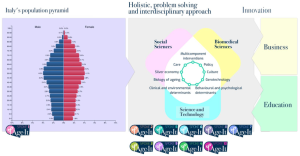
Figure A.1. The Age-It model: a research, business and education alliance for boosting innovation
Age-It brings together transdisciplinary competences covering, among others, demography, geriatrics and gerontology, neurology, cardiology, immunology, data science, education science, epidemiology, biology, genetic research, engineering, sociology, law, political science, and economics – encompassing universities, research centres, private firms, public institutions and civil society – therefore creating a new collaborative platform that will deliver a wide portfolio of innovative technological and organizational methodologies and solutions to allow individuals to age healthily in an inclusive ageing society.
Age-It embraces a “hub and spoke” model that focuses on our goals, by: 1) ensuring that Age-It activities complement relevant national and regional priorities and programmes (such as NRP, National Operative Programmes, Regional Operative Programmes) within the framework of the European Union strategies; 2) allowing its key innovations to be extended beyond the local and national level, and to have a broad impact across and beyond Europe. Age-It identifies the ten most relevant challenges to allow individuals to age well and to build an inclusive ageing society (Figure A.2) as the foundation of the Spoke infrastructure, which consists of six thematic (horizontal) challenges and four cross-integration (vertical) challenges.
- The project originates from the demographic megatrends that are shaping our society: the first challenge is thus the understanding of the micro and macro demographic drivers of ageing adopting a Data Science approach to decision-making (#1).
- Addressing and facing population ageing necessitates a focus on pivotal thematic challenges: improving our understanding of the biology of ageing (#2), of the clinical and functional factors related to multimorbidity (#3), of the life course trajectories of active and healthy ageing (#4), and of the world of care provision (#5). These challenges are intertwined with the Silver Economy (i.e., work, participation and welfare at older ages, but also new consumption and activity models) (#6) and with the political and cultural dimensions of an ageing society (#7).
- The thematic challenges are systematically integrated by three additional cross-integration challenges: The importance of interventions and technologies to reduce the burden of age-related diseases, disorders and disabilities (#8), the technological developments towards meeting the (new) needs of older people (#9), as well as the overall mainstreaming and re-thinking of ageing-related policy-making (#10).
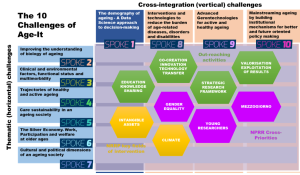
Figure A.2. The 10 challenges of ageing, 6 thematic challenges and 4 cross-integration challenges
At the intersection of these 10 challenges, in order to maximise the impact of research findings on practices and policies, Age-It identifies four so-called “out-reaching activities”: education and knowledge sharing; co-creation, innovation and technology transfer; research framework and databanking; valorisation and exploitation of results. In addition, the foundation of the research program is anchored to the three NRRP cross priorities (that of ensuring gender equality, involving young researchers, and investing in the “Mezzogiorno” – South areas), and the two NRRP key fields of intervention (attention to climate change and investing in intangible assets, All VI Reg (UE) 2021/241).
The overall Age-It governance structure is outlined in Section B2. All the activities are designed according to the principles of the European Institute of Innovation and Technology Knowledge and Innovation Communities. The ten Spokes will work together to generate a proactive research infrastructure, ensuring within-spoke and between-spoke synergies and interactions, thanks to boards and committees that include representatives from all partners: the Ethics Committee; the Steering Committee; the Spoke Coordination Group; the Scientific Advisory Board; the Data Management Board; the Innovation and Technology Transfer Board; the Dissemination Board; and the Stakeholders Board (see Section B2 for details).
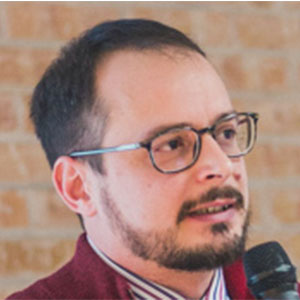
Rocco Oliveto
Full Professor
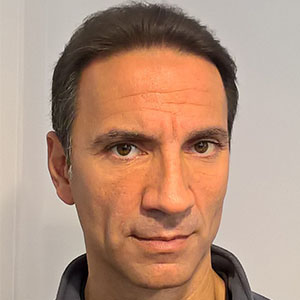
Stefano Ricciardi
Researcher

